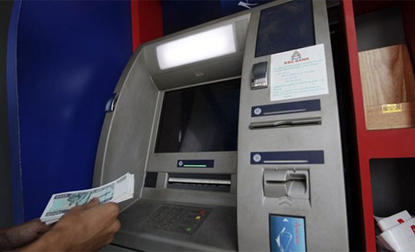Running to the ATM is a pretty common occurrence during a night out with friends. You get to the bar and realize it’s cash only, so you have to head across the street and grab some money. It seems simple enough, but with a recent announcement by the Reserve Bank of India, the concept is becoming a little more complicated—you can now withdraw money from an ATM without an account.
How It Works
In general, you know in order to withdraw money from an ATM, the money needs to be coming from somewhere (namely, a checking account). However, the Reserve Bank of India (RBI) recently announced you can now send money from your own account to anyone via a mobile phone. This means if you’ve received money at your mobile number, you can now withdraw that money from an ATM.
So let’s revisit our night-on-the-town example from above. Say your friend is the one who doesn’t have any cash. They have a really tight checking account right now and would have preferred to pay using their credit card. Using this new concept, you could theoretically transfer some money from your own account to theirs using your phone. Now, they can run to the ATM and withdraw the money. In fact, you could even take it a step further and, if you’ve forgotten your checking account card, transfer money to your own phone and go withdraw it. There are a lot of applications.
Implications
This is only available in India right now, and really hasn’t rolled out to major providers just yet. So it isn’t exactly a game-changer, at least not yet. The trend of paying through your phone is not a new one, though. So many people buy many of their previously tangible indulgences via smartphones: books, movies, music, etc. In fact, many even use PayPal through apps like LevelUp to pay at cafes. So it wouldn’t be entirely surprising to see those same people looking for currency transfers available solely using phones.
Let’s look at this from a bank industry standpoint. Why do people have different types of accounts? Because they serve different purposes—whether it’s for easy access to your money or to build interest in a savings account. In fact, you don’t exactly need a ton of investment experience to know carefully allocated funds spread across different accounts with different benefits is a great deal.
So it begs the question of how this money sits on the phone, and more importantly, how it’s monitored. There isn’t a bank to consult, nor is there even an account set up. It’s essentially the digital equivalent of lending a few bucks to a friend. So how will it be monitored from an interest perspective, and from a general digital safety perspective? PayPal has its own slew of problems, so erasing even that basic “middle man” is a bit of a risk.
Moving Forward
This concept is so new that it’s hard to really gauge perspective on it, but it’s an interesting trend to recognize. With the culture of tapping your card on smart readers or even with the futuristic rumors of in-skin bank account chips, it’s not exactly surprising to see something like this rolling out to the public. And it’s really cool technology, when running to Western Union is something that’s decidedly old-fashioned. So it’s curious to see what the security implications are moving forward. One thing is for sure, though: with all of these new mobile features (and more and more of our lives relying on our cell phone partners in crime), you’d better make sure you have a cell phone character you’re happy with.

